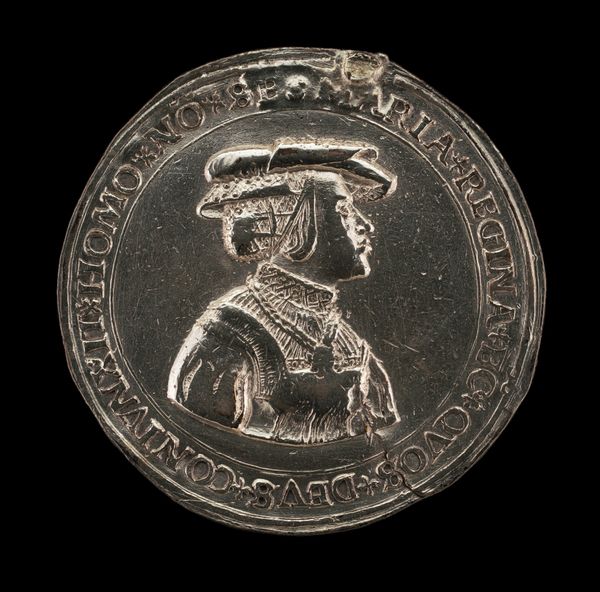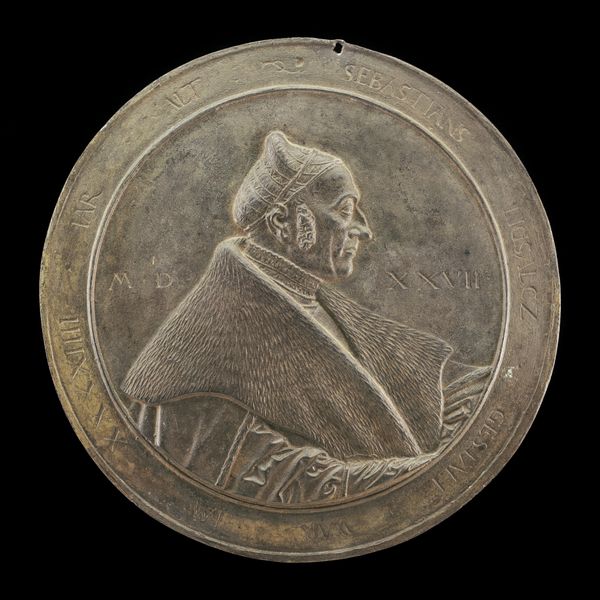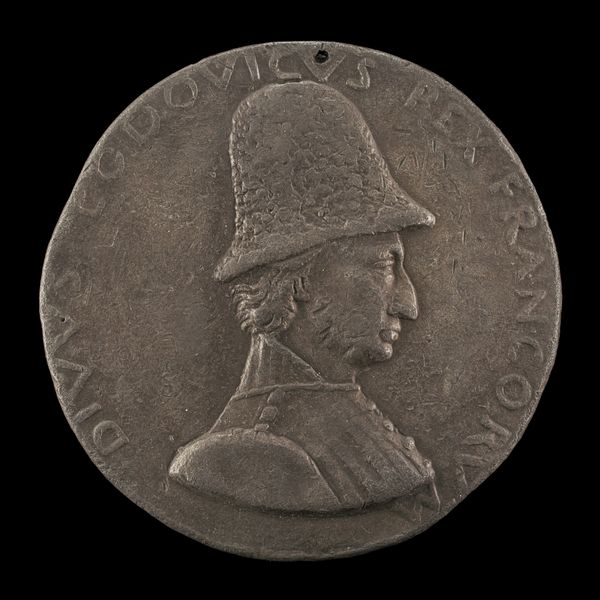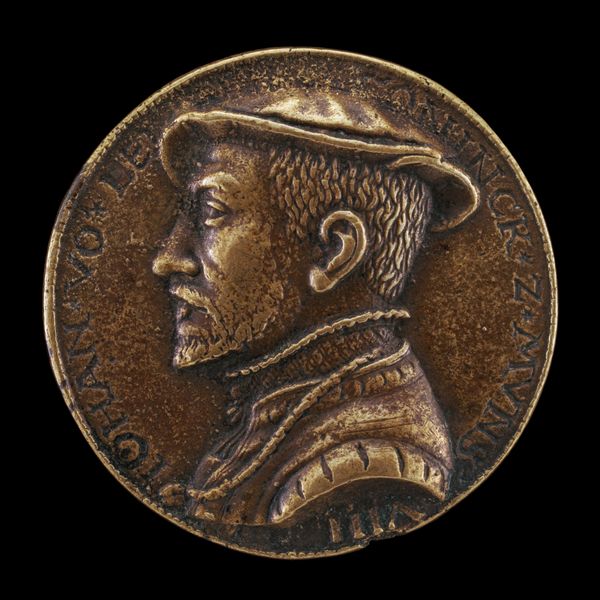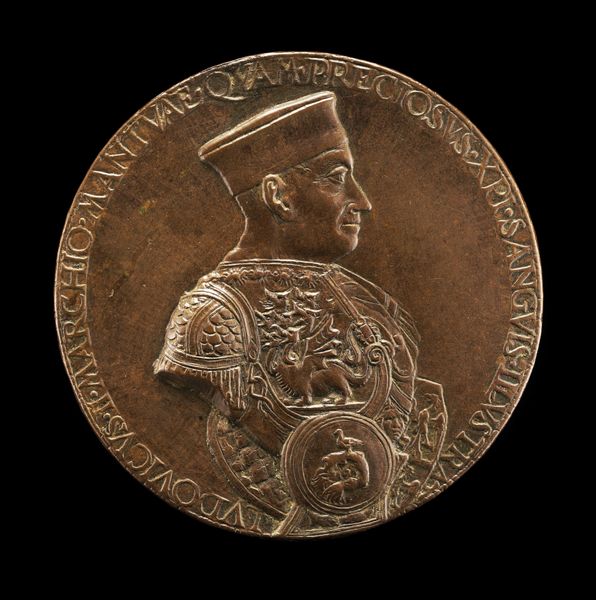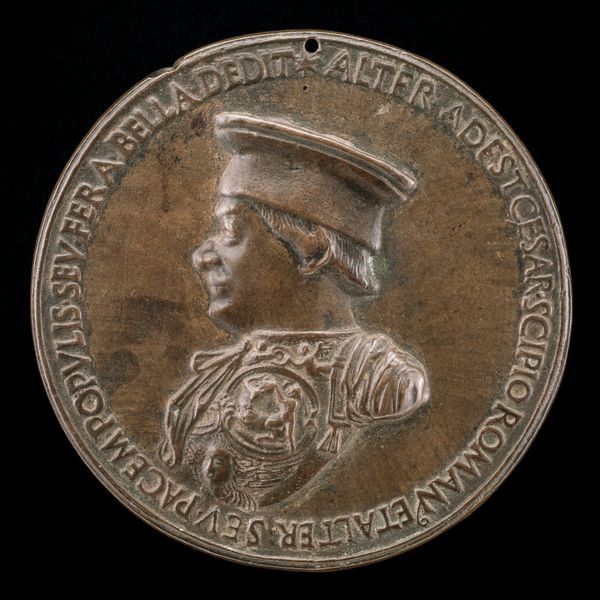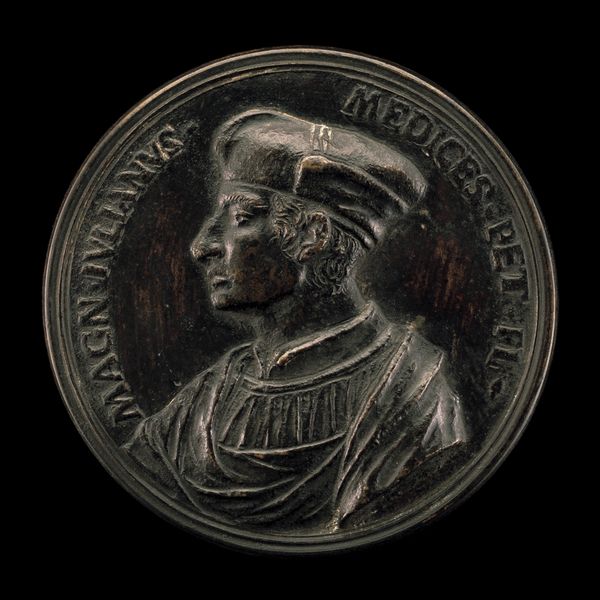![Caspar Wintzerer, 1465 or 1475-1542, Bavarian Soldier [obverse] by Friedrich Hagenauer](/_next/image?url=https%3A%2F%2Fd2w8kbdekdi1gv.cloudfront.net%2FeyJidWNrZXQiOiAiYXJ0ZXJhLWltYWdlcy1idWNrZXQiLCAia2V5IjogImFydHdvcmtzL2ZkOGFiMTY1LTY5MmUtNGViOC05M2M1LWQ1ZjA2YWQzOTZmNi9mZDhhYjE2NS02OTJlLTRlYjgtOTNjNS1kNWYwNmFkMzk2ZjZfZnVsbC5qcGciLCAiZWRpdHMiOiB7InJlc2l6ZSI6IHsid2lkdGgiOiAxOTIwLCAiaGVpZ2h0IjogMTkyMCwgImZpdCI6ICJpbnNpZGUifX19&w=3840&q=75)
Caspar Wintzerer, 1465 or 1475-1542, Bavarian Soldier [obverse] 1526
0:00
0:00
metal, sculpture
#
portrait
#
medal
#
metal
#
sculpture
#
11_renaissance
#
sculpture
Dimensions: overall (diameter): 6.9 cm (2 11/16 in.) gross weight: 73.74 gr (0.163 lb.) axis: 12:00
Copyright: National Gallery of Art: CC0 1.0
Editor: This metal medal from 1526 portrays Caspar Wintzerer, a Bavarian soldier, in profile. It strikes me as a powerful, almost stoic depiction of a man. What historical contexts are important for us to understand this work? Curator: This portrait medal offers insight into Renaissance society and its valorization of individuals, particularly those connected to political or military power. Think about the rise of humanism and how it shifted the focus towards earthly achievements. Why would a soldier be commemorated in this way? Editor: I guess to celebrate his service or achievements? Like a historical snapshot of someone deemed important by society. Curator: Precisely! These medals were often commissioned by the individuals themselves or their families, reflecting a desire to be remembered. Consider the inscription - "AET. S. LI". What could that signify about the person depicted, given this historical context? Editor: Maybe it's his age, like 51? So, it adds another layer, making it not just a depiction, but almost a historical document recording someone at a specific moment. But what about Hagenauer, the artist? Did he often portray military figures? Curator: Friedrich Hagenauer's involvement situates the work within a network of artists and patrons connected to powerful courts and merchant families in Southern Germany. While he created portraits of people from different walks of life, it is important to consider *why* this imagery would be impactful and circulated publicly through casting or gifting in metal, given ongoing social or religious tensions like the Reformation, especially as religious beliefs often had tangible impacts on portraiture and patronage at that time. Editor: So, this medal isn't just about one man, but also about how society viewed power, legacy, and even individual identity at this crucial point in history. I appreciate learning more about the public function art had back then. Curator: Exactly! And how even small-scale objects can offer rich insight into social and political life.
Comments
No comments
Be the first to comment and join the conversation on the ultimate creative platform.

